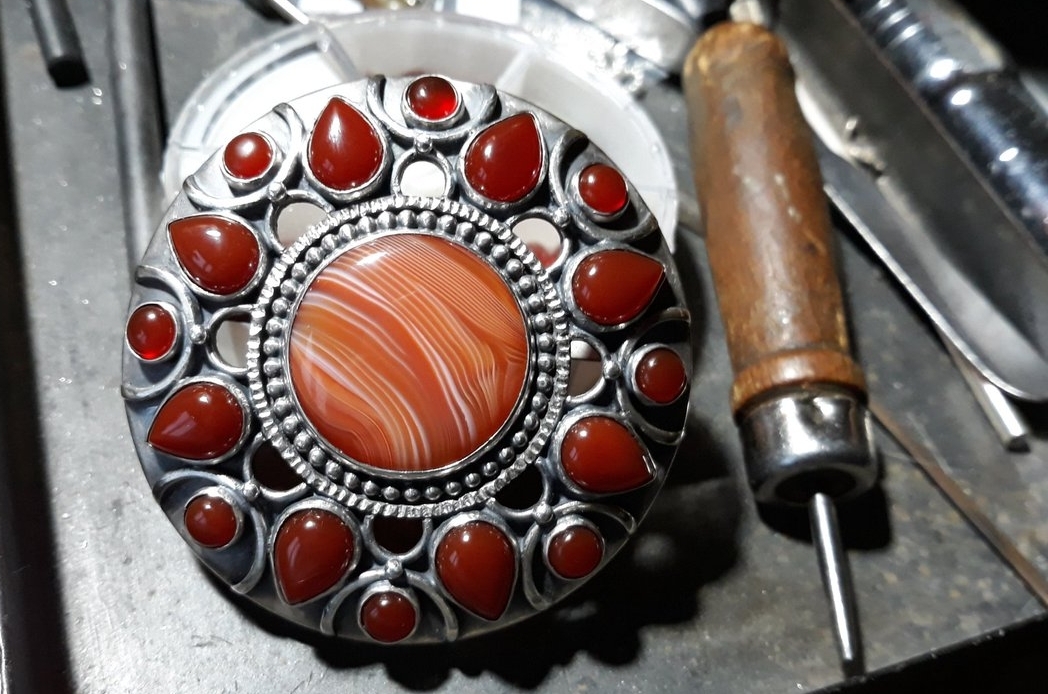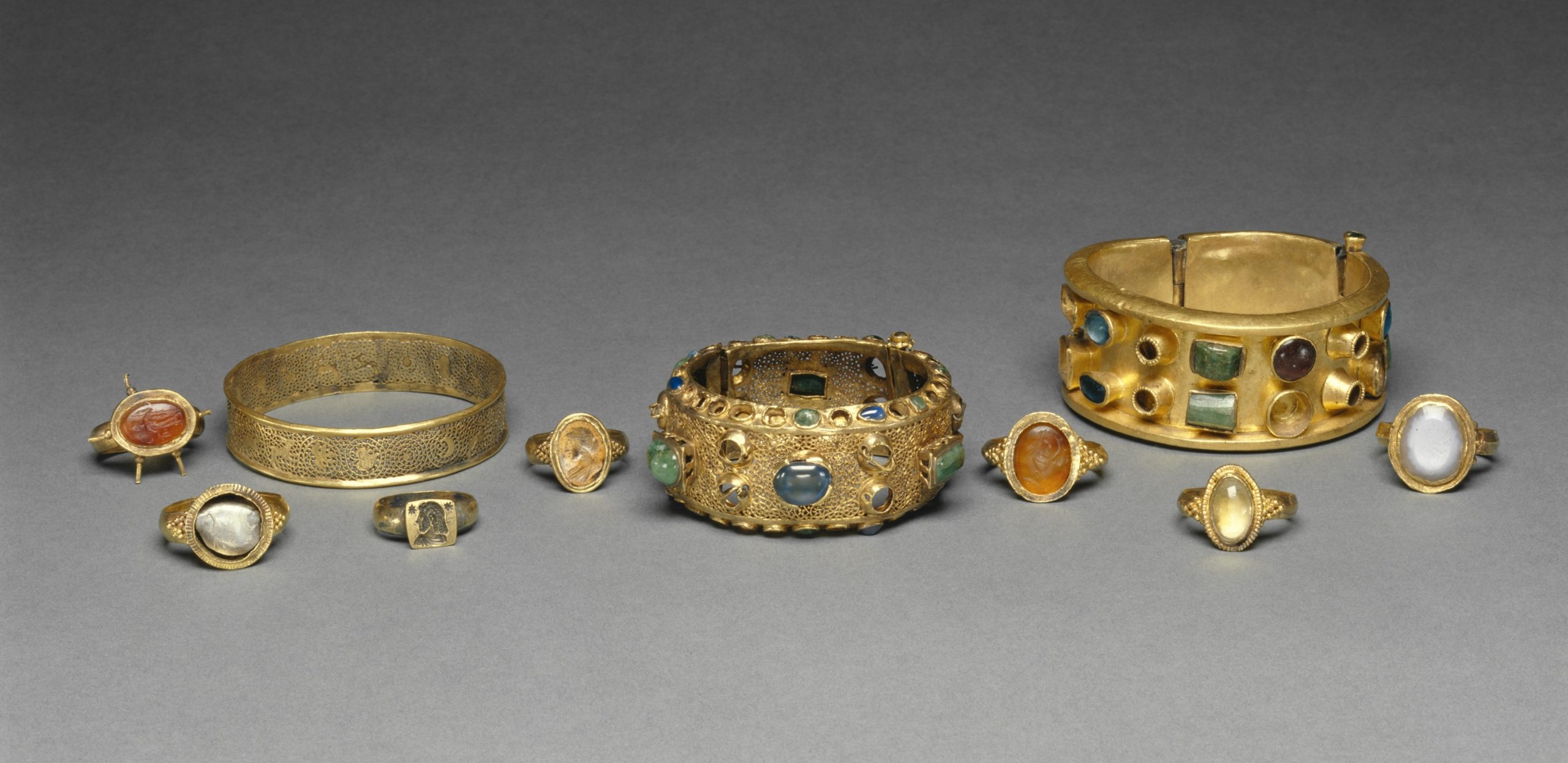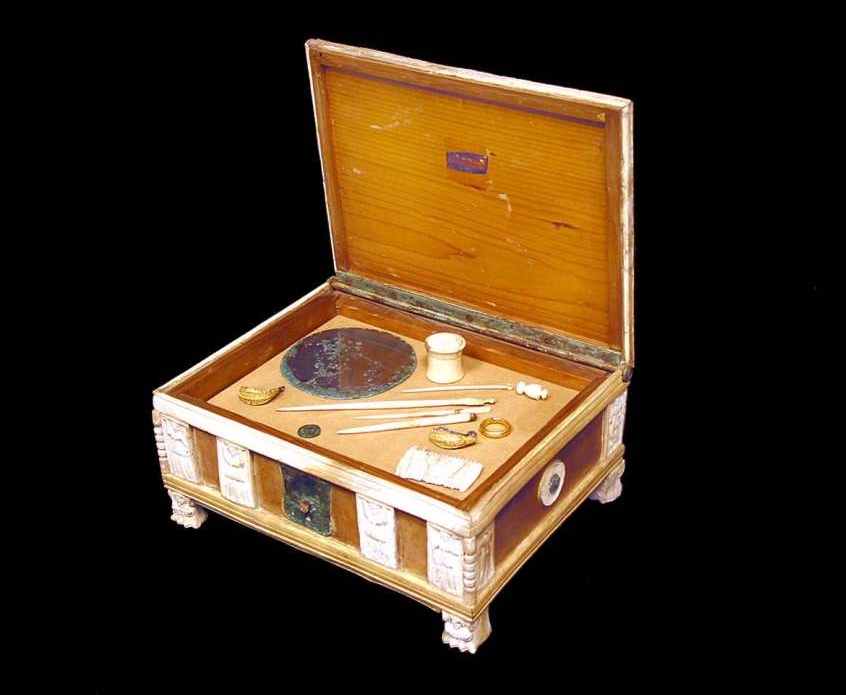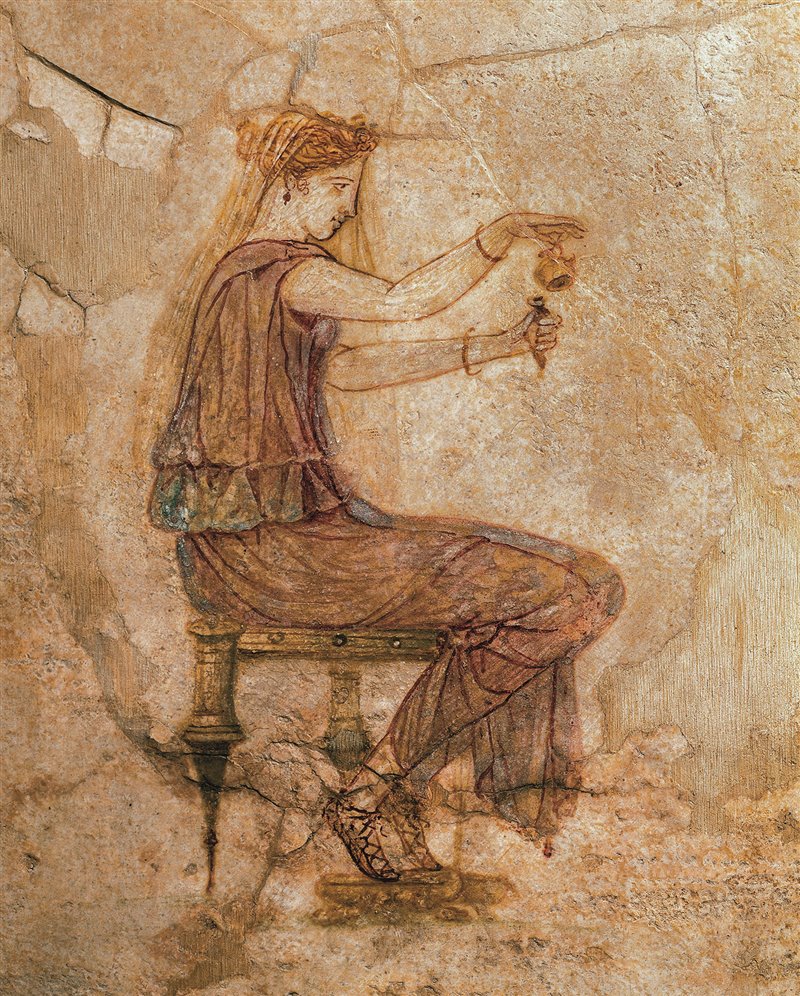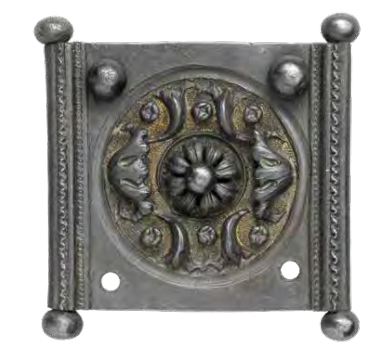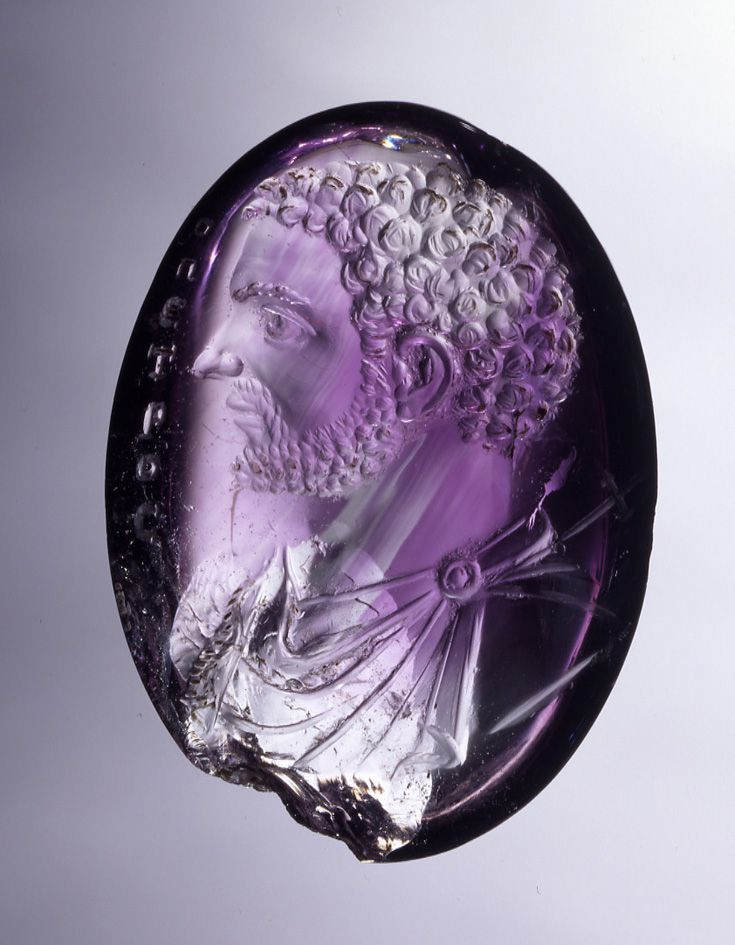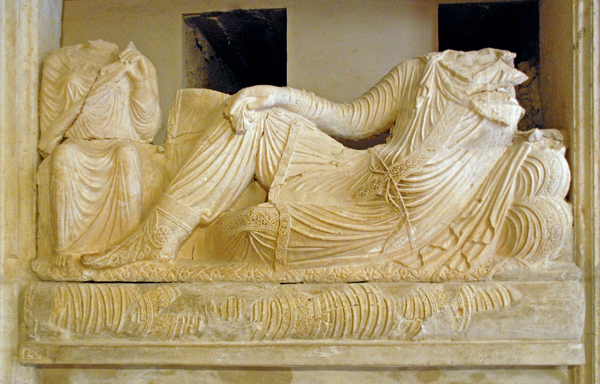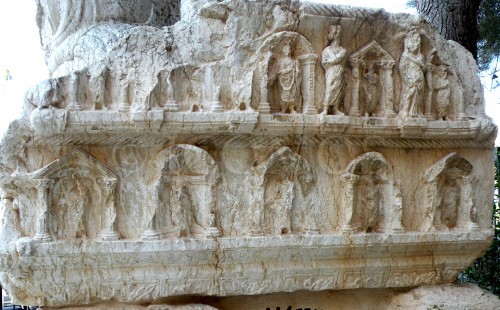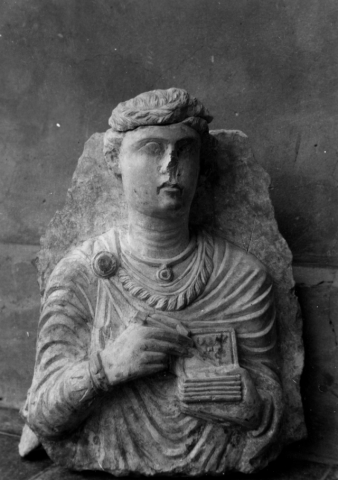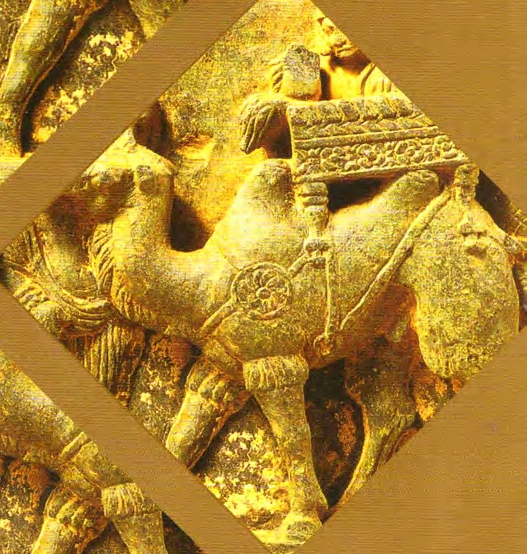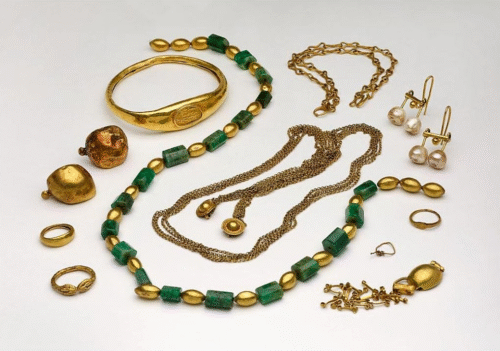
“The woman who owned this jewellery is the wealthiest of the victims yet discovered. In a bag by her side she carried 100 gold and 200 silver coins, as well as jewellery including an emerald and gold necklace, a ring with a snake’s head, an armlet showing Venus and Cupid and two long ‘body chains’, a rare and sophisticated adornment.”
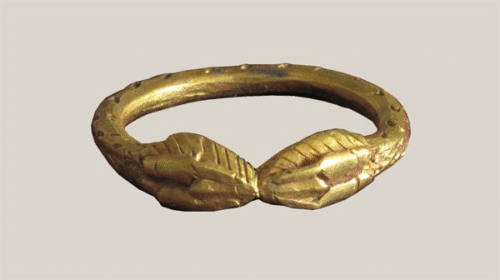
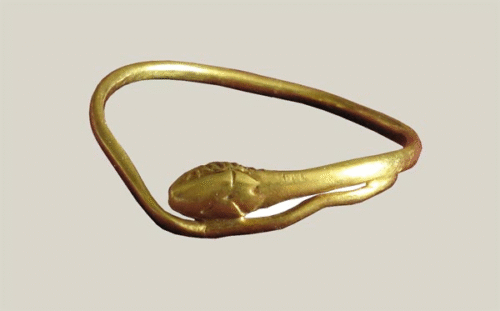
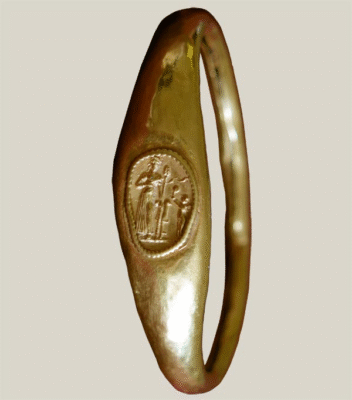

This delicate gold bracelet is adorned with a relief depicting Venus Pompeiana. Goddess holds an olive or myrtle branch, and a thyrsus. Beside her stands Cupid with a mirror.
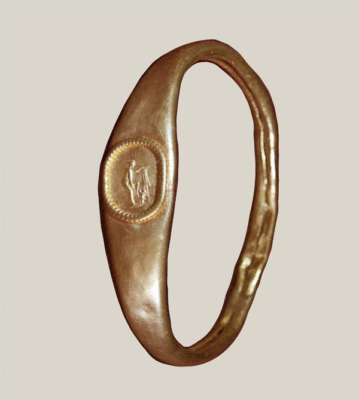
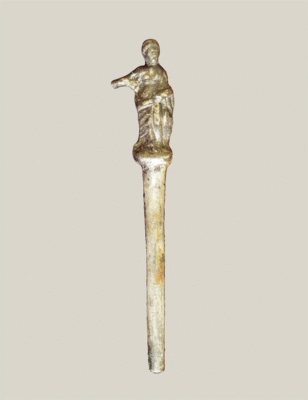
Oplontis B, room 10, from skeleton 10 (cat. 173) Inv. no. 74625
Pair of simple bracelets with emeralds.
Oplontis B, room 10, from left arm of skeleton 14 (cat. 179) Inv. no. 73341
Oplontis B, room 10, from right arm of skeleton 14 (cat. 180) Inv. no. 73312
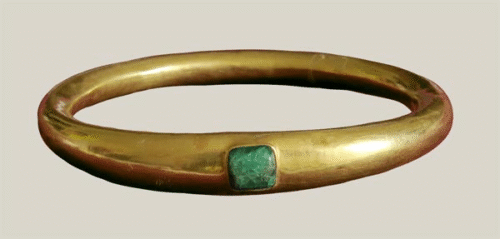
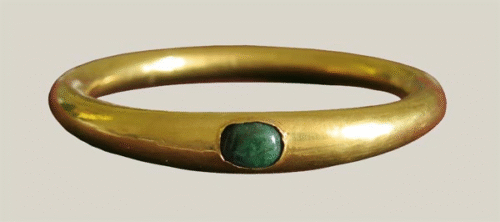
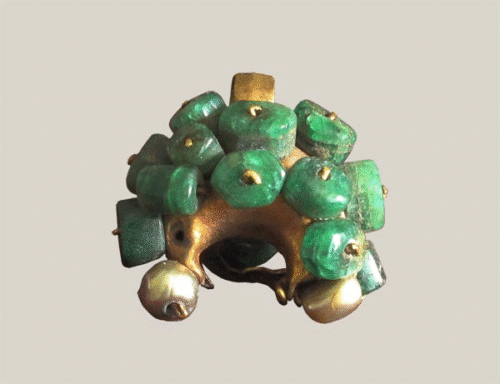
Oplontis B, room 10, from leather bag with skeleton 7 (cat. 175) Inv. no. 73321
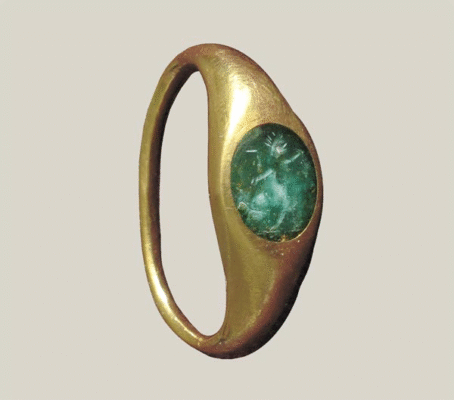
Oplontis B, room 10, from leather bag with skeleton 7 (cat. 175) Inv. no. 73321
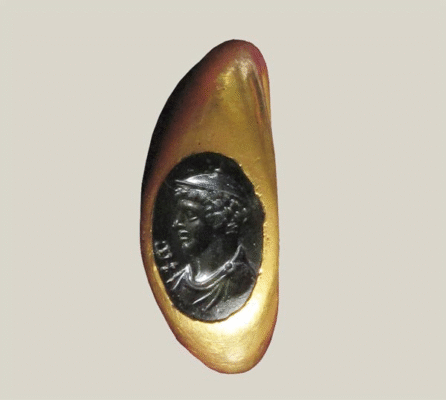
Oplontis B, room 10, from cloth bag with skeleton 14 (cat. 181) Inv. no. 73314
Necklace made of gold and emerald beads.
Oplontis B, room 10, from box with skeleton 27 (cat. 186) Inv. no. 73412a
“The necklace is 58 cm long and is made of an alternate succession of 24 oval plain gold beads (1.3 x 0.7 mm average) and 19 hexagonal prisms of emerald crystals.”
Research analysis revealed that the emeralds on the Oplontis necklace were traded to Rome from the El Sikait deposit, the famous emerald mine in Egypt. The earliest documented records of the functioning of a mine are the records of Strabo, a Greek geographer, philosopher, and historian (63 BCE – 24 CE).
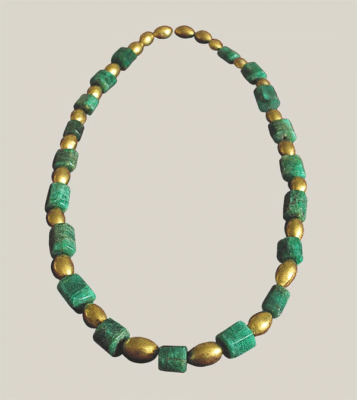
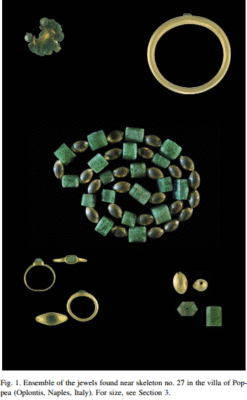
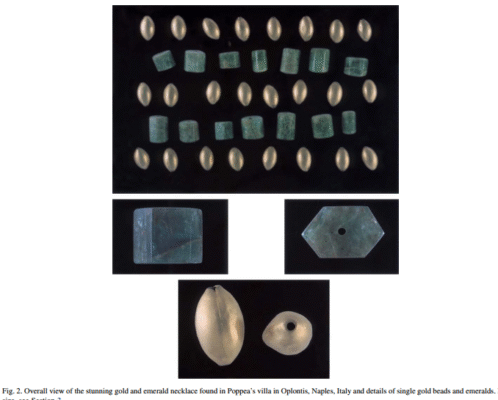
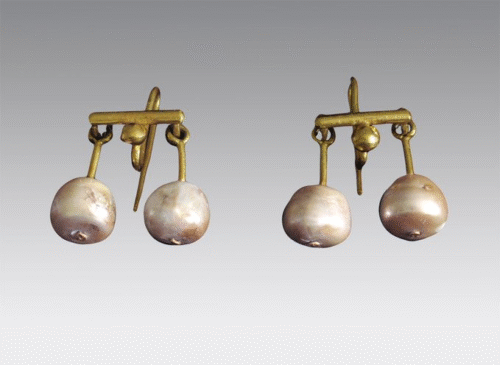
Oplontis B, room 10, from a box with skeleton 27 (cat. 189) Inv. no. 73407
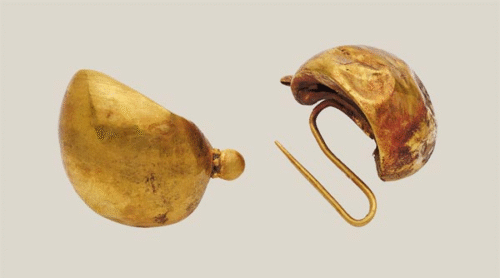
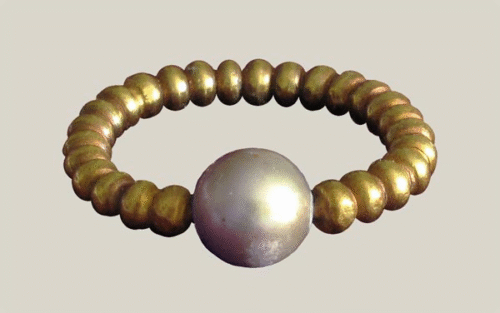
Oplontis B, room 10, from leather bag with skeleton 7 (cat. 176) Inv. no. 73320
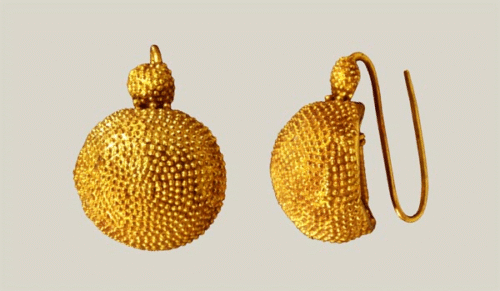
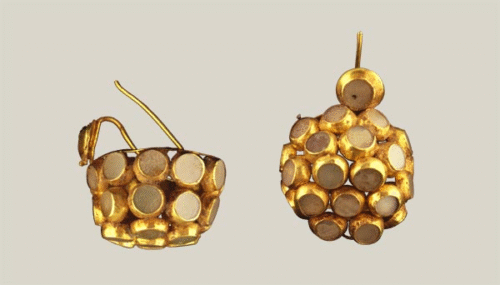
- Golden necklace with a Lunula pendant
Oplontis B, room 10, from box with skeleton 27 (cat. 187) Inv. no. 73409
- Gold body chain (?)
Oplontis B, room 10, from neck of skeleton 27 (cat. 184) Inv. no. 73410
Sources:
1. Exhibition: Leisure and Luxury in the Age of Nero: The Villas of Oplontis near Pompeii; the Kelsey Museum
Jewelry from Oplontis B
2. The emerald and gold necklace from Oplontis, Vesuvian Area, Naples, Italy
Research report on the origin of emeralds by Carlo Aurisicchioa, Alessia Coramib, Sylvana Ehrmanc, Giorgio Grazianib, Stella Nunziante Cesarod
Journal of Archaeological Science
Volume 33, Issue 5, May 2006, Pages 725-734
3. Presentation on theme: “Outside the house: Pompeii”
